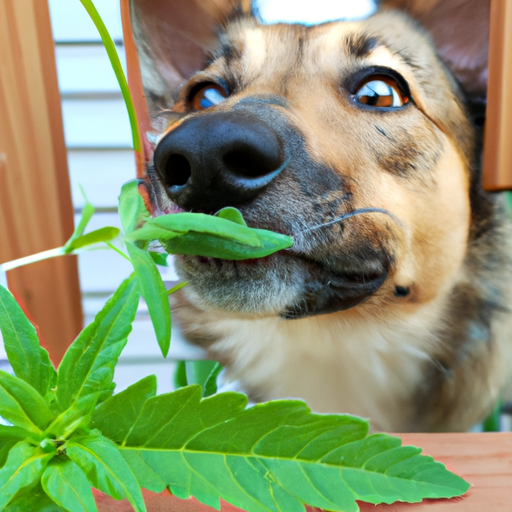If you’re a pet parent to both dogs and cats, you might have wondered how dogs react to catnip. Known for its mesmerizing effect on felines, catnip’s impact on dogs is less understood. Does it hold the same allure for our canine companions, or do they simply shrug it off? This comprehensive guide delves into the fascinating world of dogs and catnip.
- Table of Contents
- Understanding Catnip
- How Does Catnip Affect Cats?
- Does Catnip Affect Dogs?
- Trying Catnip With Your Dog
- Precautions and Recommendations
-
Frequently Asked Questions
-
Key Takeaways
- Catnip is a natural herb that affects cats but does not have the same impact on dogs.
- Dogs might show interest in catnip due to its strong smell.
- For dogs, catnip can serve as a mild sedative when ingested.
- Always monitor your dog when introducing any new elements to their environment or diet.
Understanding Catnip
Catnip, scientifically known as Nepeta cataria, is a member of the mint family and is native to Europe, Asia, and Africa. It’s a perennial herb with heart-shaped leaves and white, purple-spotted flowers. It’s the scent of this plant, particularly a chemical compound called nepetalactone, that drives cats wild. You can learn more about catnip and its effects here.
How Does Catnip Affect Cats?
When exposed to catnip, most cats will exhibit behaviors such as rolling, flipping, rubbing, and eventually zoning out. They might also show aggressive playfulness. It’s a form of response to a pheromone-like effect that catnip has on felines.
Does Catnip Affect Dogs?
While catnip acts as a stimulant in cats, dogs do not react the same way. Dogs might show interest in catnip due to its strong smell, but they lack the sensitivity to nepetalactone that cats possess. However, when ingested, catnip can act as a mild sedative for dogs.
This informative article from the American Kennel Club further elaborates on how dogs react to catnip.
Trying Catnip With Your Dog
If you want to try giving your dog catnip, here are a few steps to follow:
- Start with a small amount: Introduce a small quantity of catnip to your dog’s environment and observe their reaction.
- Monitor their behavior: Look for signs of interest or disinterest. If your dog seems indifferent or distressed, remove the catnip.
- Check for any adverse reactions: Keep an eye out for symptoms like vomiting, diarrhea, or excessive drooling, which could indicate an allergic reaction.
Also, you might want to check out these dog-friendly plants on OneTopDog that can be alternatives to catnip.
Precautions and Recommendations
While catnip is not toxic to dogs, it can cause gastrointestinal upset if consumed in large quantities. Here are some precautions you should take:
- Limit the quantity: Even if your dog seems to enjoy catnip, keep the quantity small to avoid any potential digestive issues.
- Monitor your dog: Keep a close eye on your dog when they’re around catnip. If you notice any signs of distress or discomfort, remove the catnip immediately.
Remember, every dog is unique, and what works for one might not work for another. This guide on dog behavior from OneTopDog can help you better understand your furry friend’s unique reactions.
Frequently Asked Questions
- Can dogs eat catnip?
-
Yes, dogs can eat catnip in small amounts. However, it might cause mild gastrointestinal upset.
-
Is catnip harmful to dogs?
-
Catnip is not harmful to dogs unless consumed in large quantities.
-
Can catnip be used as a dog sedative?
- Catnip can act as a mild sedative for dogs, but it’s always best to consult with a vet before introducing new elements to your dog’s diet.
In conclusion, while dogs might not react to catnip with the same fervor as cats, it can still be a part of their environment, depending on their individual reactions. Always remember to monitor your dog’s behavior when introducing catnip and consult with a veterinarian if you have any concerns.
For more insights into dog behavior and care, explore OneTopDog.



